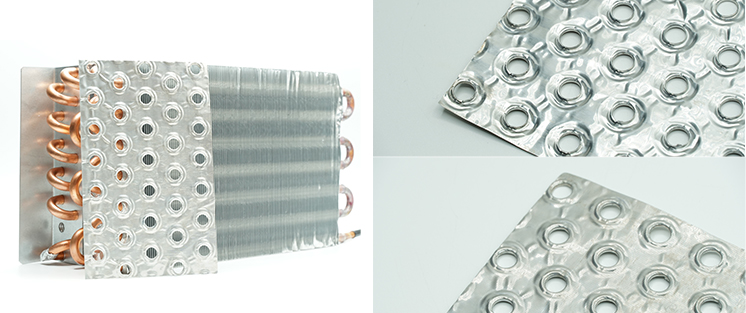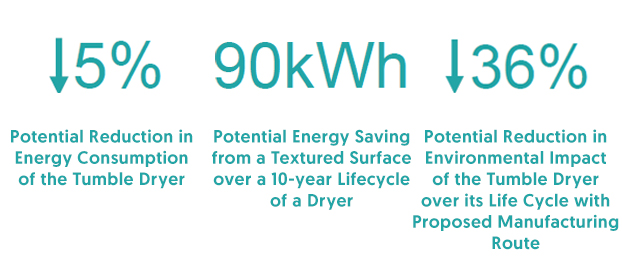
LST can create a water repellent material surface. It was hypothesised that this type of surface could reduce the energy consumption of a tumble dryer, by reducing the drying cycle time, resulting from enhancements to the dryer’s evaporator unit. The sustainability benefits were evaluated using LCA to compare this potential energy saving to the additional manufacturing resource required, from the LST process.
The laser processing team at the MTC have successfully develop a superhydrophobic (water repellent) surface for the dryer’s evaporator unit fins. It was calculated that this change to the product could reduce the drying cycle time, and therefore reduce the energy consumption by 5%.
Whilst on the face of it, this manufacturing process change appears to be more sustainable, assessing the environmental impact over the full life of the product is essential to ensure the new process is truly more sustainable.
To provide this assessment, an LCA, which covers the products lifecycle cradle to grave, was used. This means the full breadth of environmental impacts are considered across all phases of the products life.
Using LCA methodology, the MTC validated the proposed solution. This considered the trade-off between the additional energy needed for the laser process compared to the energy savings over the tumble dryer’s life cycle.
It was found that, despite the reduction in energy consumption, the laser process would have a negative environmental impact on the tumble dryer, due to the additional manufacturing step.
Whilst the application of LST to each fin was found to be less sustainable, an alternative approach of texturing a forming tool, which could then transpose the texture onto each fin, would achieve a net reduction in environmental impact.

The MTC successfully generated a water repellent surface on the evaporator unit fins using LST, with water contact angle measurement data to validate and quantify this perceived benefit.
The functionality’s durability of the surface (hydrophobicity) was evaluated and passed an industry standard steam test.
Using LCA, the MTC identified a manufacturing route for a tumble dryer evaporator, that will both improve surface functionality whilst providing a net-reduction in the product’s environmental impact.
Impartial environmental assessment of the impact of MTC manufacturing capability using LCA.
A more sustainable manufacturing route, using LST, was modelled in the LCA, and showed an improvement across all LCA impact categories, using several different life cycle impact assessment (LCIA) methods.
When comparing the textured die tool to the benchmark scenario, a 36% environmental impact reduction could be achieved, based on the ReCiPe endpoint LCIA method, a standardised approach to converting impacts into a single score for comparison purposes.
